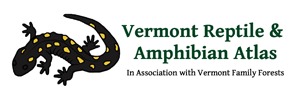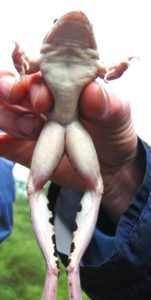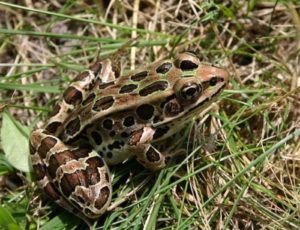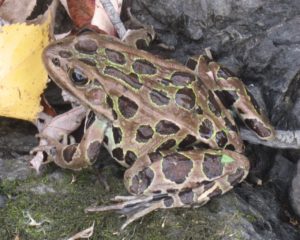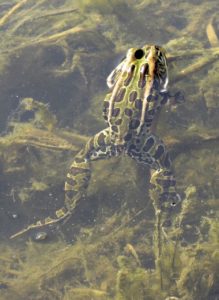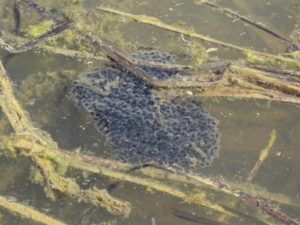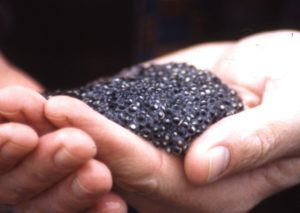Lithobates pipiens
Identification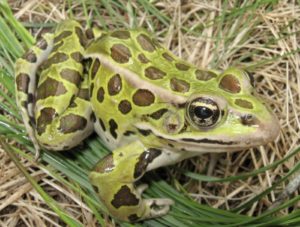
The Northern Leopard Frog is 2-3½ inches long and has randomly distributed black spots on its back, sides, and legs. Each spot is surrounded by a light halo. The background colors of the frog can range from gold to green. Its gold or brown dorsolateral ridges often stand out in contrast. Its belly is white with no other markings, unlike the Pickerel Frog that has yellow under its legs and around its waist.
The Northern Leopard Frog’s call is two-parted, consisting of a series of taps followed by a sound similar to someone rubbing a balloon. In Vermont, it can be heard April through mid-May, most commonly in mid-April.
Egg masses are softball-sized and filled with densely packed eggs. Often, many females lay their eggs in the same area.
Get more detailed identification and life history information by downloading the chart here.
You can learn more about this species and see some video footage by checking out this clip from our Rattlers, Peepers & Snappers DVD.
Range/Habitat
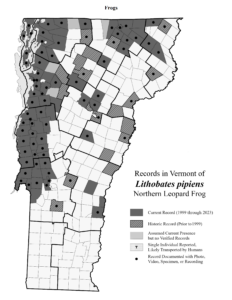
[ click image to zoom | download printable PDF ]

[ click image to zoom | download printable PDF ]
The Northern Leopard Frog is a three-habitat species: It needs permanent water for overwintering, floodplains and marshes for breeding, and wet meadows and fields for foraging. It is fairly common in the Lake Champlain Basin.
Status
The Northern Leopard Frog has a state natural heritage rank of S4 (relatively common). Please report sightings of this species in Vermont if you have not reported them within the last five years from a given location. Any natural history observations (feeding, migrations, road crossing areas, early or late season appearance, abnormalities, etc.) are appreciated. Photographs are always helpful, particularly if your report is the first report of this species from a town.
Additional Photos
More Info
All the Vermont species listed in the Rana genus were reclassified into the Lithobates genus in 2007.
- Rana pipiens at Amphibiaweb
- Lithobates pipiens at Animal Diversity website
- Rana pipiens at the Yale Peabody Museum website
- Listen to its call
at Animal Diversity,
at Frog Quiz,
or at Yale Peabody Museum (.wav format)
Species summary written by Ariel K. McK. Burgess.
